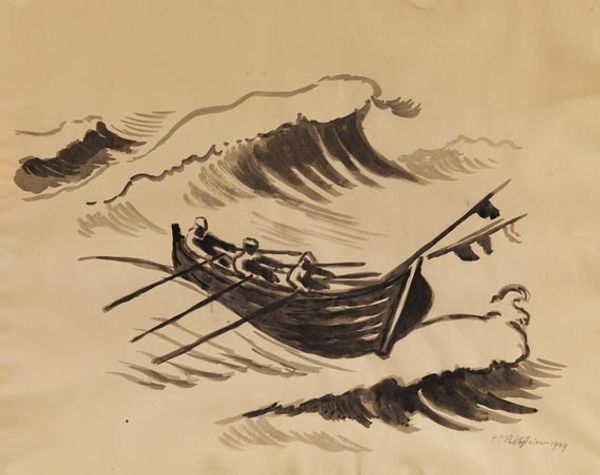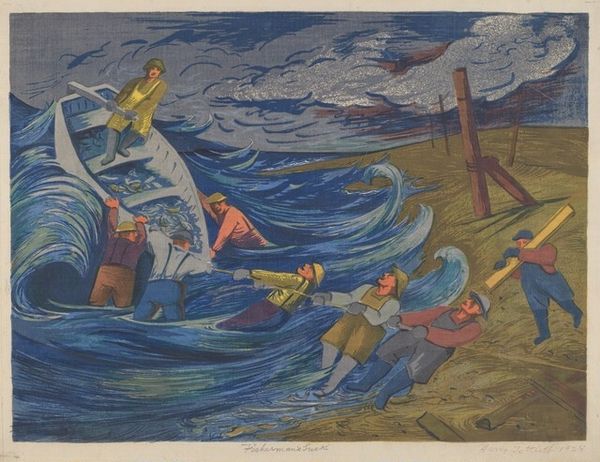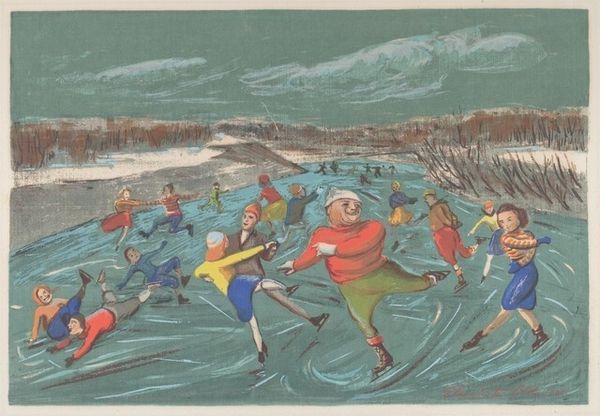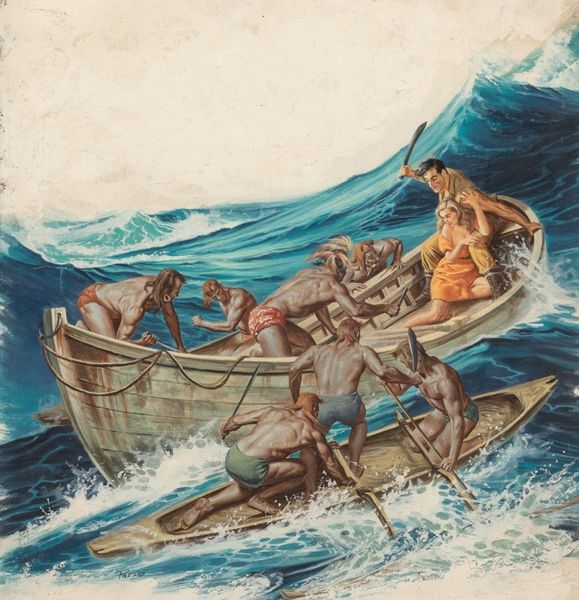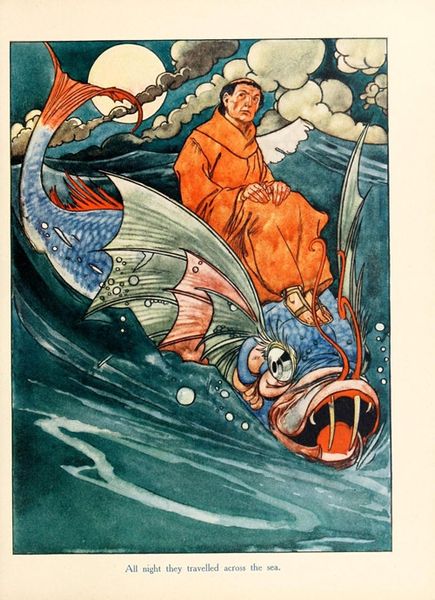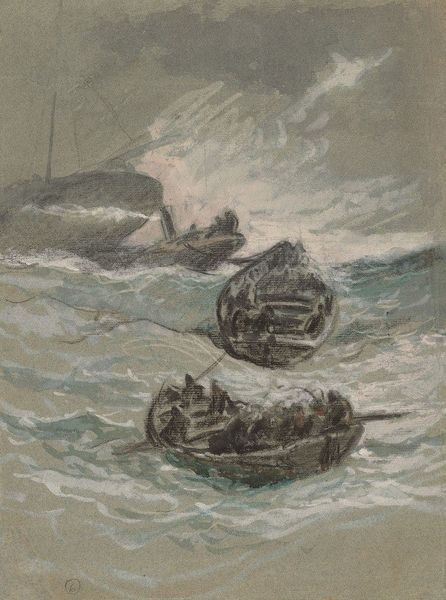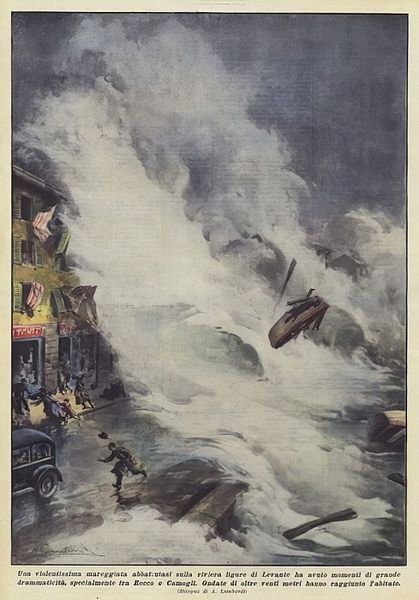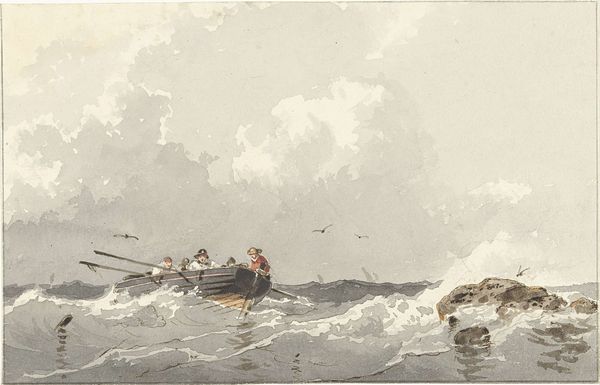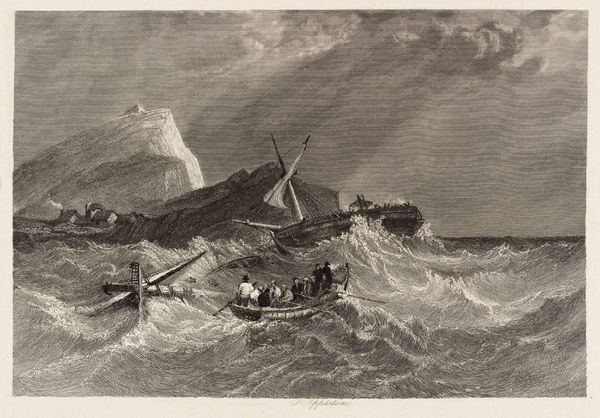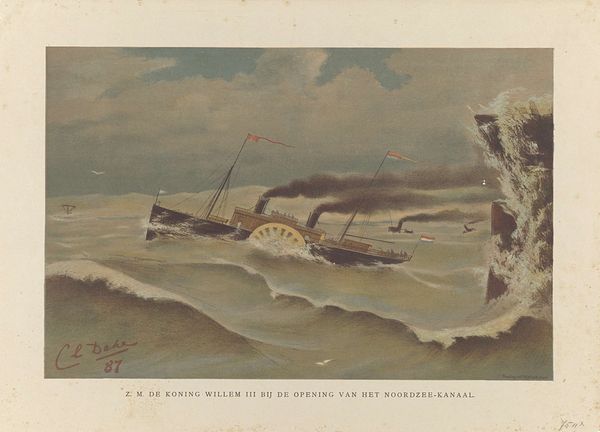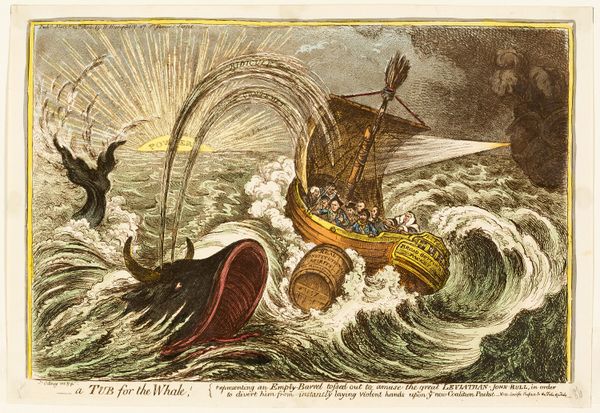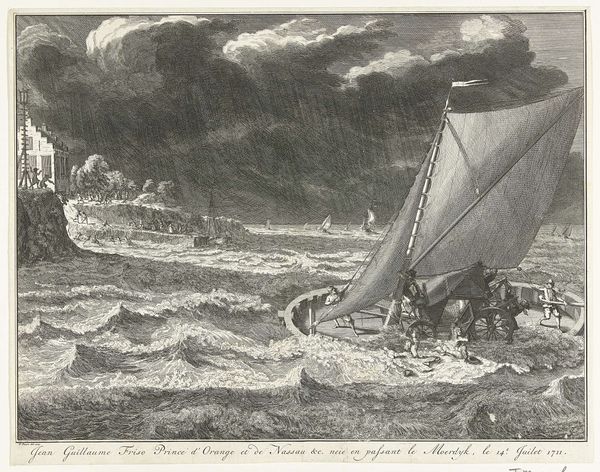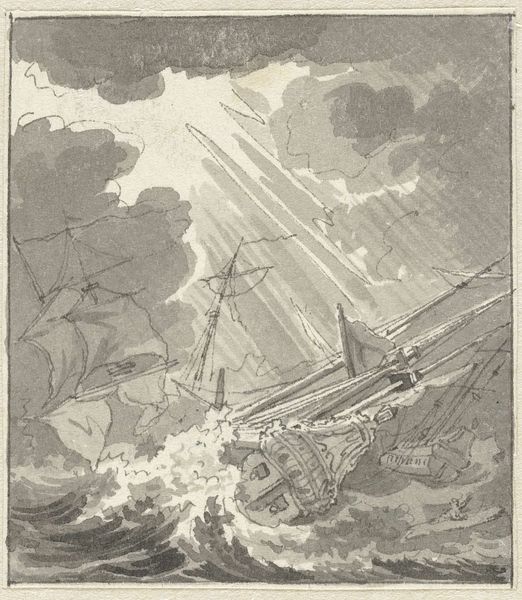
Copyright: Public Domain
Editor: This mixed-media piece, "The Rescue," created sometime between 1875 and 1900 by Thomas Stevens, really captures a dramatic scene at sea. I'm struck by the way the textile elements blend with the watercolor and coloured pencil, creating a sort of naive but intense representation of danger and heroism. What do you see in this work? Curator: I see a fascinating convergence of textile production, artistry, and social commentary embedded within this small landscape. Let's consider the cultural context: late 19th century England. The production of woven silk 'pictures' was booming. But beyond decorative appeal, pieces like "The Rescue" engage with narratives of Victorian heroism and anxieties surrounding maritime disasters. How do you think the medium itself—a woven textile—contributes to our understanding of the artwork's message? Editor: That's interesting! I hadn't thought about the medium itself speaking to the message. I suppose the act of weaving, with its connotations of labor and industry, almost elevates the working-class heroes in the rescue boat, doesn’t it? Is the storm in the background supposed to look real, and does that help the viewer's emotional response? Curator: Precisely. The “naive art” style might even subtly challenge academic painting traditions while still tapping into the popular taste for sentimental, narrative art. Think about whose stories were being told, and by whom, in that era. These kinds of works helped define ideas about courage and duty across class lines. Editor: I never would have considered the layers of social meaning embedded in a woven picture! It highlights how even seemingly simple artworks can reflect complex cultural values. Curator: Indeed. By viewing it as a social object, rather than simply an aesthetic one, we open ourselves to richer interpretations.
Comments
No comments
Be the first to comment and join the conversation on the ultimate creative platform.
